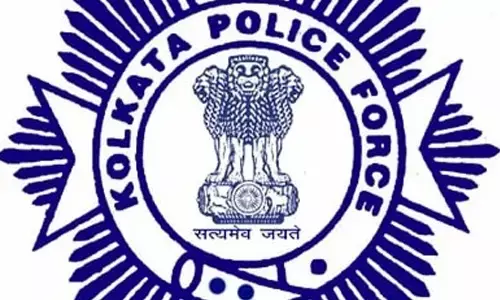The anatomy of main examination

Representational image
When we compare the differences in examination pattern it is observed that the prelims examination is mainly to filter the candidates Whereas the mains examinations are to test the depth of the candidate and proficiency in the subject.
When we compare the differences in examination pattern it is observed that the prelims examination is mainly to filter the candidates Whereas the mains examinations are to test the depth of the candidate and proficiency in the subject. UPSC has given the following guidelines regarding the mains examinations. Candidates have to mandatorily score minimum 10 per cent marks in each of seven papers as well as clear the total cut-off marks for the main examinations as determined by the commission. If a candidate does not score 10 per cent marks in even one of the papers, he or she will not be able to qualify for the mains.
Marks specific instructions in mains:
Please read each of the following instructions carefully before attempting the questions. There are 20 questions printed both in Hindi and English. All questions are compulsory. The number of marks carried by a question is indicated against it. Answers must be written in the medium authorised in the admission certificate which must be stated clearly on the cover of this question cum answer booklet in the space provided.
No marks will be given for answers written in a medium other than the authorised one. In 2019 in the general studies paper one answer to questions number 1 to 10 should be in 150 words, whereas answers to question number 11 to 20 should be in 250 words. 150 words carry 10 marks and 250 words carry 15 marks total is 250 marks. In total there are seven papers eligible for rank and the total comes to 1750 marks. The qualifying papers of English and regional languages do not count for the ranking. Both of them are of 300 marks and and the minimum is 25% marks. They are known as qualifying papers A and B. Paper A is on Indian languages that are part of the 8 th schedule of the Constitution. Candidates can choose any one of the Indian languages given in the 8 th schedule. The paper A on Indian languages is not compulsory for candidates hailing from Meghalaya, Mizoram, Manipur, Nagaland, Sikkim and Arunachal Pradesh. Paper B is about the English language. If the candidates are unable to clear the qualifying papers, they will not be eligible for the personality test, even if they qualify papers 1 to 7.
The interview / personality test will carry 275 marks with no minimum qualifying marks. Marks obtained by the candidate in the civil services examination will count for the rank.
Minimum qualifying marks in mains 2018:
Category Cut-off mark
General 774 /1750 marks
OBC 732
SCs 719
STs 719
The mains examinations for Civils for 2022 is scheduled from 16 September 2022. After the Prelims exam result declaration, the candidates who have cleared the prelims have to fill DAF1 to appear in the UPSC mains examination. DAF stands for Detailed Application Form. In 2021 Mains examinations were delayed due to pandemics and were conducted from 7 January 2022 to 16 January 2022. The previous question papers are available on the website of UPSC.
The DAF for UPSC mains has six modules/ sections
1. Personal
2. Educational information
3. Parental information
4. Employment information
5. Upload of documents
6. Final submission
Some fields like name, date of birth, exam Centre for UPSC mains etc will be pre populated in the UPSC mains DAF from the information provided at the time of filling the UPSC online application for the preliminary examination. Once final submission is done, no changes are allowed online, so candidates should be extra careful and crosscheck all details while filling the DAF for UPSC mains. Based on the DAF forms, a lot of questions are posed at the personality test stage. So, the candidate should keep a copy of the DAF for his reference at the time of interview. Candidates should prepare for prelims and mains simultaneously as there is a syllabus overlap. Marks in the mains examinations are not given for superficial answers, so candidates should do answer writing practice. An important part of Civils preparation is practising the previous year's question papers.
The mains examination intends to assess the depth of a candidate's knowledge. Hence marks will only be given for relevant, meaningful and succinct answers. The questions test aspirants basic understanding, ability to analyse and take a view on conflicting Socio-economic goals, objectives and demands. Although UPSC maintains that for general studies papers, paper 2 to paper 5 a well-educated person will be able to answer them without any specific specialised study. Candidates are advised to go through the previous year's question papers to ascertain for themselves whether they need specialised study. Candidates are allowed to use scientific non-programmable calculators in the mains if needed. The level of examination for the optional subjects will be equal to an honours degree between bachelors and masters level. Only for engineering subjects law and medical science, the scope is limited to the bachelors degree level. In the engineering division Civils , mechanical, and electrical subjects can be chosen.
Get ready for Cum- September!
Prelims Vs mains
Let us have a look at both the patterns
| PRELIMS | MAINS |
| 2 papers | 9 papers |
| Each Two hours duration. Exam for Ranking | Each 3 hours duration Qualifying exam. |
| Objective type | Descriptive type |
| Multiple choice questions. | All questions to answer/ no choice 12th standard knowledge.Post graduate level |
| Marks will not count. | Marks count for rank |
| No minimum marks. | Minimum marks prescribed |
| 1:12.5 ratio selection | 1: 2.5 ratio selection |
| No cut off marks. | Cut off marks vary every year to filter To test the proficiency candidates. |
| English/ Hindi. | Regional languages can be opted |
| 4.5lak candidates | Around 12500 candidates |
(The author is retired additional director general Doordarshan Delhi)

















